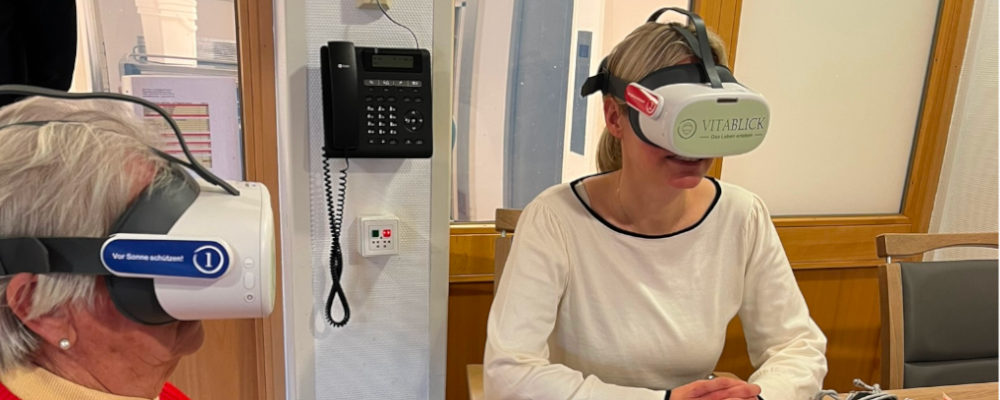A practical example from Braunschweig shows how VR goggles can be used in geriatric care.
Alfons H. often sits alone in his room. At the AWO residential and nursing home in Braunschweig-Querum, the reserved pensioner is one of those who seek little contact with the other residents. But that is about to change. The 75-year-old has recently discovered a new pastime: for a few weeks now, the house has offered the opportunity to try out virtual reality goggles (VR gogggles) that takes you on a journey. This appeals to the tech-savvy resident.
With VR goggles to Venice or the Alps
Over 200 virtual trips take the residents to Venice or the Alps. If they want, they can also climb the 300 steps to the dome of Sacré-Coeur and enjoy a breathtaking view over Paris from above. The films are about ten minutes long and are designed to enable people to travel who would otherwise be no longer able to do so,” says facility manager Katja-Maria Staroste.
What makes it special is that the VR goggles allow travelers to immerse themselves in the films. A ride on the Swiss mountain railway can be experienced as if the virtual travelers were sitting in the train themselves, looking out of the window. Esther Wittmaier from the center’s social services says: “It’s fascinating how realistic the videos are. It all seems very real. It’s like being in a gondola in Venice yourself.”
Mental and physical experience
Alfons H., who has never traveled in his life, also took a gondola ride. “He can now make up for this experience in the virtual world,” explains Staroste, who has also included residents with dementia in the VR project. “At the beginning, we were concerned that we would overwhelm the people and that they would have a hard time finding their way back to the real world after a trip,“ she describes. But none of that came true,” Wittmaier sums up.
On the contrary: the approximately 30 residents who went on a trip as part of the six-month project were mentally back surprisingly quickly. And that was despite the fact that they were even physically active, bending down to pick up shells during a walk on the beach, for example. After the trip, one resident even laughingly checked whether her clothes were still dry. She had taken a virtual dive and snorkeled over a coral reef.
Small groups travel with VR goggles
“Gedanken auf Reisen” (Minds on a Journey) is a VR project supported by the Techniker Krankenkasse health insurance company. Sabrina Jacob describes the approach. „In addition to the memory work, social interaction is particularly important,“ says the head of the TK state office in Lower Saxony.
The videos are watched in small groups. Usually, four to eight residents sit together and experience their journey together. They are accompanied by social care staff. They take care of the technical handling and give tips on how the residents can move around in the virtual world. Afterwards, they encourage the residents to share their experiences.
Knowing the biography
It is important to know the travelers‘ backgrounds in advance so that a suitable excursion can be selected if necessary. “If we know that someone used to like to go to the mountains or the sea, we suggest appropriate films,” explains Wittmaier.
The trips almost always end with a lot of fun. Regardless of whether certain trips are repeated or, as in the case of Alfons H., whether they are first excursions, there are sometimes tears of joy at the end, as Staroste reports. “The VR headsets are real emotional machines,” she says.
For Alfons H., the project opened doors. He is now taking part in other activation programs. He is particularly keen on the newspaper round. He wants to learn more about faraway places.


